Multitasking is a leading trend for many specialists, especially project managers. Running multiple projects simultaneously has become their routine.
To run several projects at once effectively one should avoid the most common mistakes and use special strategies and programs.
What is project management
A project is often referred to as a way to turn ideas into reality. Usually the project is started to solve the problem or to use an opportunity. That is why a project has:
- an idea or a goal;
- an executive or a team;
- resources (financial, technical and human resources, as well as time).
To reach a particular goal in a definite period of time, staying within the given resources, you need project management.
In other words, due to project management problems and challenges turn first into a detailed plan and then become a successful case you can be proud of, which is due to
- risk analysis and risk management;
- optimal management strategy;
- implementation of the ultimate team management method;
- ability to assign tasks correctly;
- understanding of checkpoints and the importance of effective feedback.
Useful skills in project management
To run multiple projects at once within the indicated deadlines and with aimed results, a project manager must have many skills. You have to consider that such employees very often manage several projects simultaneously. These can be independent projects or subprojects within one complicated and ambitious initiative.
To organize a multi-project planning and manage several projects at once, a project manager must have the following professional experience:
- Management techniques and understanding of situations where each one should be applied. Some prefer the traditional cascade model, others choose Agile. A project manager should be aware of both.
- Teamwork. A project manager should know how to work with the employees and create a favourable working environment, but it is also important that he can hire new team members, if this is necessary for project success. Besides, newcomers would need good onboarding to become a part of the team as soon as possible.
- Basic knowledge in the target area. Otherwise it can be extremely difficult to understand how well the job is done. For this reason project managers must be well-versed in many technical fields.
- Multiple planning. If a project manager runs more than 2 projects at once, time management skills and ability to create a good working schedule become crucial. For example, if you use sprints, it makes sense to start sprints in different projects on different days. This eliminates chaos in your workflow.
- Prioritizing. Each project has important but not urgent tasks, or tasks which are urgent, but not very important. To prioritize tasks according to their importance for the project progress you can use the simplest tool - the Eisenhower decision matrix.
- Delegation. You can do everything well and independently only to a certain limit. Then you realize that a day has only 24 hours. So the sooner a project manager gets the importance of delegation skills, the less likely he is to burn down and start making serious mistakes.
Problems, mistakes and pitfalls of multiple project managing
Companies might have completely different projects, but mistakes are often very much the same. Let's consider the most common ones.
Assign one person to organize several projects that are at the same stage of the life cycle
If there are not ten of these projects and they are not too large-scale, but typical for your company, then the mistake will not be fatal.
But let’s imagine another situation: it is necessary to carry out an initiation, that is, to get as much information as possible about the purpose of the project, to justify why it is relevant right now, and to define stakeholders. This stage takes a really long time and the further planning and success of the project depends on it.
And if there are three or four such projects at the same time? It is clear that a person is not physically able to work well on several projects at the same time, so some project will definitely be left behind.
To avoid such a situation, you have to consider that a project manager can be entrusted with more than one project, but they must be at different stages of their life cycle. For example, one is in the initiation, while another is approaching the completion stage.
"Closing" all key processes on one employee
Even when a project manager is an extremely responsible person, force majeure can happen. If such a situation occurs and all the key information is in the head of only one person, it is a disaster. At a certain point team members will stop understanding what and how to do next.
To avoid this, it is necessary to create documents that clearly describe tasks (and even create templates for regular ones), processes and areas of responsibility.
The ideal option is when the team has an employee who can substitute the project manager.
Ignoring project management tools or using too many of them
Both options are wrong. Yes, if the projects in management are not complicated, it may seem that mail and a few documents on Google Drive are enough.
In fact, it only seems so until the moment when it is necessary, for example, to quickly get an overview of the time spent by any specialist. It turns out that no one recorded anything.
It also happens the other way around, when one program is used for file sharing, another for communication and tasks, and a third for time tracking. Eventually, the issue will arise about how to synchronize all this data.
Therefore, at the very beginning of the project, evaluate its scope, specifics, form of payment, etc. This will help you understand whether you only need a time tracker and, for example, a messenger, or you need a full-fledged task tracker with Gantt charts, reporting and multiple project prioritization.

Multiple project managing strategies
When it comes to running several projects at a time the following strategies can be helpful.
- Set goals and agree on them with the client. You must have them written down as detailed as possible. All parties must understand the goals and confirm their understanding. If someone has an insignificant doubt, formulate the goals again until they are clearly and unanimously agreed by both team and client.
- Understand the scale of projects. To do this, you need to detail all the steps to achieve the goals. The more details, the better. If the plan is very approximate, there will definitely be problems related to a misunderstanding of the scope and additional expenditure of resources.
- Consider risks for each project. You might find different risks: financial delays, issues with work schedules. The main point is to consider them in advance and think of ways to eliminate their effect.
- Create the best teams. Sometimes there is a temptation to save money and hire an employee with less experience for less money. As a result you spend time and money, while the most simple tasks are performed carelessly. Then you have to make a new team to start from the very beginning or to correct the mistakes of the previous executives.
- Get all key project information in one place. You will most likely need a task manager to run several projects at the same time. Such a solution will allow you to have an overview of what is happening in each project now, and what should happen in the future. So you can see overlaps, problems with deadlines and employees’ workload.
- Explore projects from a strategic perspective. Find the project, which is most important for the company. Find out the most difficult and time-consuming tasks. Give them the highest priority and start with them, even though it's always tempting to do the easier tasks first.
- Avoid unreasonable project expansion. Most often, the project begins to grow with a large number of new details if little time was devoted to planning. Sometimes this situation occurs because of the desire to make the perfect product. But this growth can lead to disruption of deadlines and too large budget.
- Balance the interests of teams and customers. At the beginning everyone seems to have agreed on the goals, but during the work, conflicts between developers and customers periodically arise. In this case, the project manager should use his negotiating skills and find a middle ground so as not to offend anyone and not harm the project.
- Avoid micromanagement. Sometimes it seems that it is important to be aware of everything that is happening with the project. This leads to the fact that the project manager is controlling almost every step of the team members. As a result, teams are stressed, lost and unable to work independently. It is better to develop trust and encourage initiative and autonomy.
- Explain the general plan of work on the project to every team member. And also do not forget to define the specific area of responsibility of every employee. Record all this in writing so that any team member can quickly find the contact person for each issue.
- Update project statuses regularly. You should always know the status of each project. Sometimes updates are needed almost every day, sometimes weekly status updates are enough. It depends on the complexity of the project and the deadlines.
- Constantly seek feedback from colleagues. This is very important, because timely criticism or advice can help avoid critical mistakes, the correction of which will cost you time and money.
- Find options to save money and then reinvest it. Usually, customers realize how much the budget can increase. If you stay within the smallest budget, and finish the project earlier than promised, then you are likely to get a bonus. It can be invested in the development of employees or purchase of new equipment. That is, in something that will let the team advance.
- Don't be afraid to adapt. Sticking to a plan is important, but sometimes it's worth being flexible in order to respond to challenges or problems that arise during the work. It is better to change something tactical to achieve a strategic goal in a different way.
- Set time limits for projects. To manage complex projects, a manager must set the time when he is available and specify issues he can be contacted for.
- Standardize document formats for projects. It is good if the projects are managed for one customer. Then there is a chance that the project manager will not have to master unknown and/or inconvenient ways of preparing intermediate results and final reporting. If the projects are from different clients, it is recommended to agree on some unified format of documents at the beginning of the work.
- Choose a way to fight procrastination. Almost everyone faces this phenomenon, especially when there are several projects, and some of them are difficult. You can use the technique used by the co-founder of The Muse, Alex Cavoulacos. He allocates his working time during the day as follows: 1 large project or task, 3 medium and 5 small ones.
- Organize effective communication. Without a well-established algorithm of communication with teams, you won’t be able to work efficiently. Therefore, create team chats in the messenger that is convenient for you. It is good if it can be integrated with the task manager. With this option, for example, team members can receive reminder messages about tasks with due dates.
- Automate everything you can. If there are many calls in the project, and managers cannot always answer them, set up an automatic callback: there are special services and scripts to connect them to the contact database or CRM. If there are repetitive tasks, select a task manager where they will be assigned automatically.
- Evaluate the project after it is completed. It is very important to make conclusions, think of mistakes that were made and the ways they were handled. It is also crucial to define which steps were most efficient. You will consider this experience while running next projects.
Best project management products
We have already mentioned that multiple project management becomes more complicated when you don’t use special tools or overuse them. Here we offer an overview of services which can make multiple project managing more efficient.
Depending on the project features you can implement several tools or choose one, which would combine the features you need for your projects.
Project management tools
These products allow coordinated teamwork as all employees see the general plan of the project and the tasks assigned to them. The manager has a project overview at any time.
Trello
Platforms: Web, iOS, Android, Windows, Mac.
Features: the product is great for running several small projects at once. Due to user-friendly interface in form of Kanban board and simple registration, Trello is usually prefered by the employees. The tasks are displayed as cards, which can be moved between the columns, which makes the operation very convenient. Task assignment and sharing is also done in some clicks.
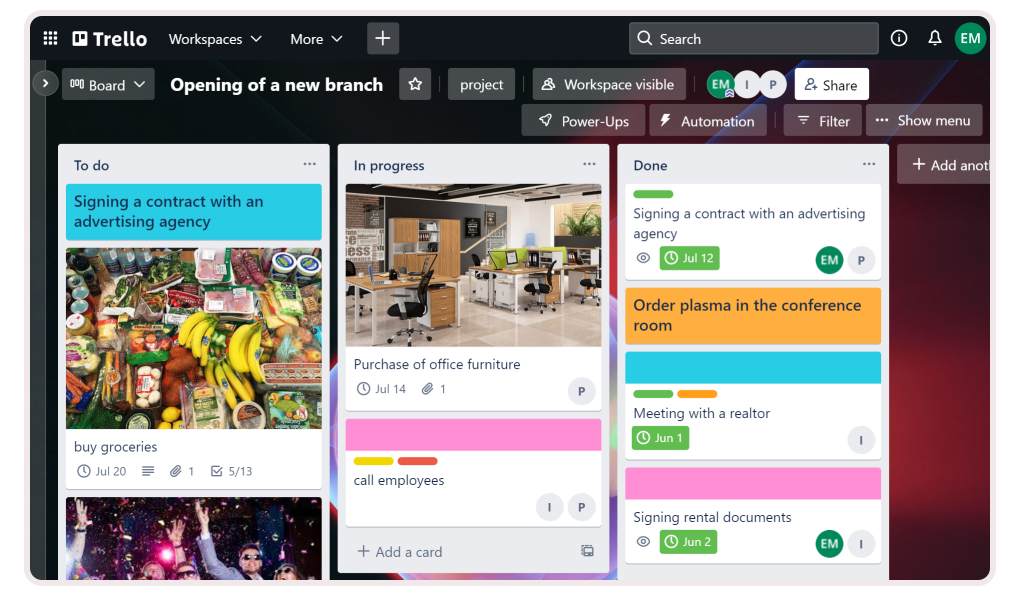
Integrations with Slack, Google Drive, Jira and other services are available.
Cons: some managers don’t like that they have to create a new board for each project, sometimes there are difficulties with setup.
Pricing: free trial is available. The paid version starts at $5 per user/month, when paid yearly (or $6 for monthly rates).
Basic version does not offer such useful features as real-time reporting and analytics, but they are included into Premium version for $17.5, as well as a possibility to combine boards into collections and manage teams.
Free version is available, where users can not add fields to the boards, and calendar / timeline are also unavailable.
Rating at Capterra: 4.5 of 5.
Worksection
Platforms: Web, Windows, iOS and Android.
Features: this is a multifunctional product which can be used for project planning and management. It offers complete and visual statistics. For example, the manager has an overview of the following:
- expenses;
- progress rate;
- overdue tasks;
- team involvement and others.
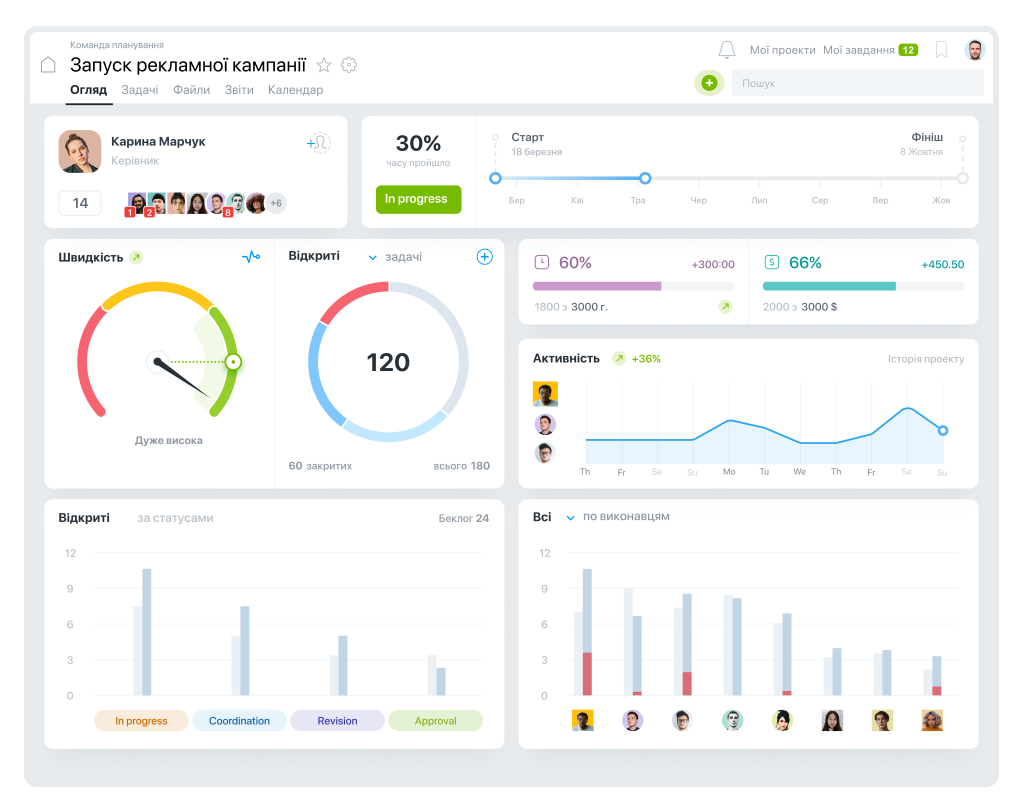
Users like
- Gantt charts;
- Kanban boards;
- dashboards;
- high level of data security (you can choose Germany-based server);
- quick technical support with response rate within ca. 10 minutes (within 1 hour on weekend).
Among other pros: integrations with CRM-systems, GoogleDocs, Slack, Telegram.
Cons: not all users are satisfied with the mobile app.
Pricing: a 14-day trial version is available. Paid versions start at $29 per month for 10 projects and 10 users. Tariff plan for $49 per user offers 20 projects and 20 users, while for $199 per month you get unlimited project number with up to 50 users.
You can use a free version, but it is limited to 2 projects and 5 users, as well as up to 0.1 Gb data storage. While the Premium version allows up to 500 Gb data, personal domain and better data security.
Rating at Capterra: 4.9 of 5.
Hubstaff Tasks
Platforms: Web, SaaS, cloud.
Features: simple task tracker with UI based on Kanban board. You can move the task cards, comment and track progress, use checklists and labels. There is also a special function for Sprint management.
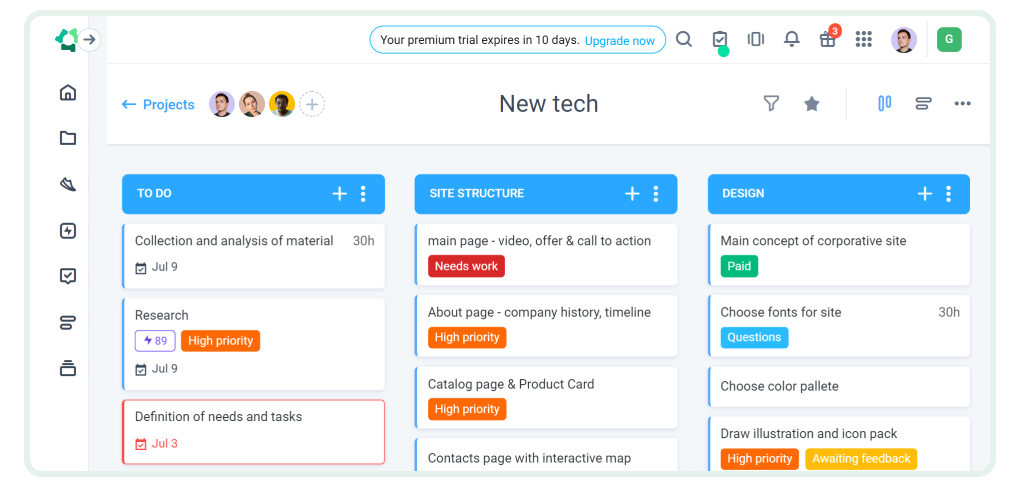
Cons: no task templates and API integrations.
Pricing: 14-day trial period is available. Free version offers access for 5 users, with up to 100 Mb data storage for each user, and a possibility to run up to 10 projects. For $5 per month you get an unlimited number of users and projects, with 5 Gb data storage for each user.
Rating at Capterra: 4.6 of 5.
Teamwork
Platforms: Web, iOS, Android, Windows, Mac, Linux.
Features: this task manager offers efficient performance due to
- lists of tasks and subtasks,
- Gantt charts and Kanban boards,
- calendar.
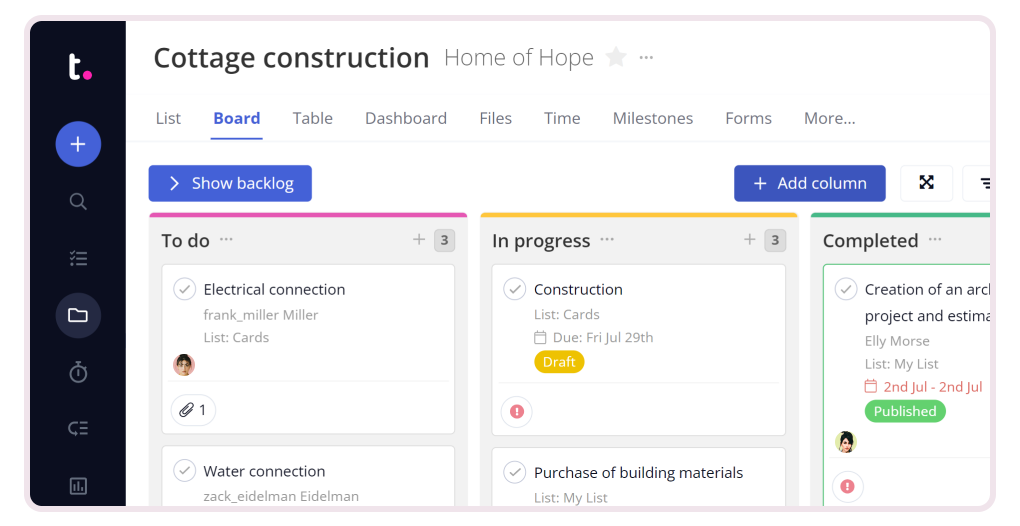
Built-in chat, time-tracker and tools for document sharing will make your work more efficient.
Cons: problems with API, repetitive bugs in task management, a little confusing UI.
Pricing: trial version is available for 30 days. Paid tariffs cost between $10 and $18 per user/month, when paid yearly. Monthly rates will require $12.5-$22.5 per month.
There is also a completely free version, which is limited to 5 users and 1-2 projects. The functions are also limited: there are milestones, tasks, messaging, but billing and project templates are not available. For example, for $10 the users get all functions of the free version with additional time tracker, invoicing, chat and 20 project templates.
Rating at Capterra: 4.5 of 5.
Time tracking services
Even if you only start working or run simple projects, time trackers are worth implementing. They help to realize how much time is spent for a task and contribute to a more efficient future project planning.
Time Doctor
Platforms: Web, iOS, Android, Windows, Mac, Linux.
Features: intuitive product which fits well managers who want to have an overview of websites which their employees visit during their working hours. This time tracker also makes screenshots from time to time.
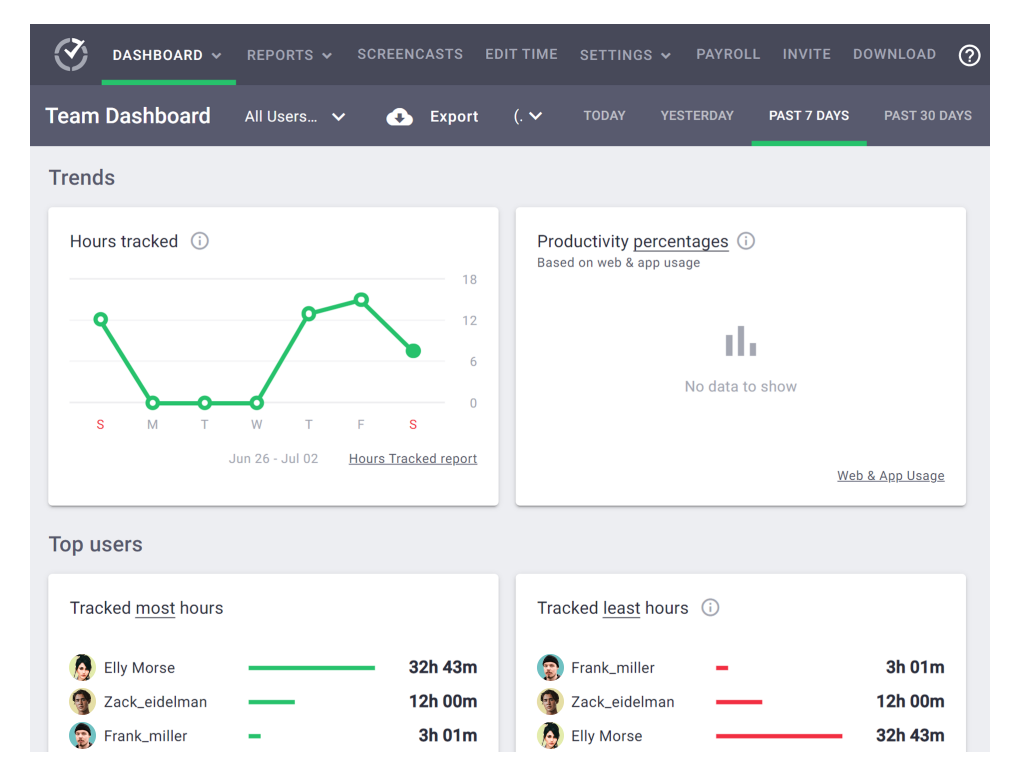
Integrations with Asana, Basecamp, Trello and other task trackers are available.
Cons: time synchronization is not always correct when using different devices, some users find pop-up notifications annoying.
Pricing: 14-day trial period is available. Paid versions cost between $70 and $200 per user when paid yearly. The cheapest version offers task and project management, unlimited time tracking and screenshots, for $100 per month the service tracks websites and allows over 60 integrations.
Rating at Capterra: 4.5 of 5.
Toggl Track
Platforms: Web, iOS, Android, Windows, Mac, Linux
Features: intuitive product with user-friendly interface. It offers not only time tracking, but also reporting and charts, as well as data export.
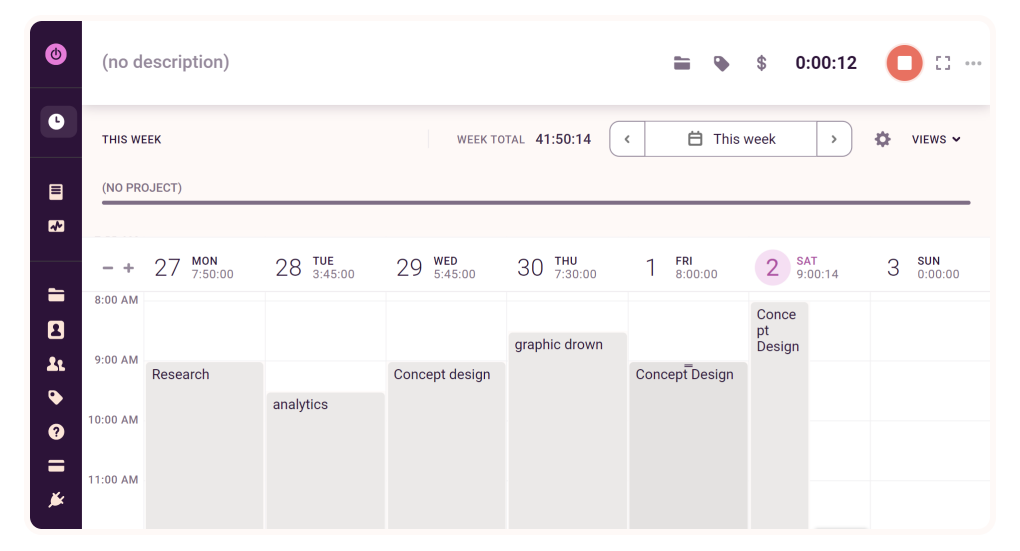
Cons: some users experience difficulties with finding projects which were managed long ago. Others don’t like interrupted sessions.
Pricing: access to Premium tariff is free for 30 days. Free version is also available, which is good for teams with up to 5 members. Time tracking, tag and client number are also unlimited. Paid tariffs cost $9-$18 per user/month when paid yearly. If you pay every month, the price would be higher: $10-$20. Paid versions offer project templates, billing, time rounding for reports.
Rating at Capterra: 4.7 з 5.
TMetric
Platforms: Web, iOS, Android, Windows, Mac, Linux
Features: Simple time tracker which accounts not only working hours, but also breaks.
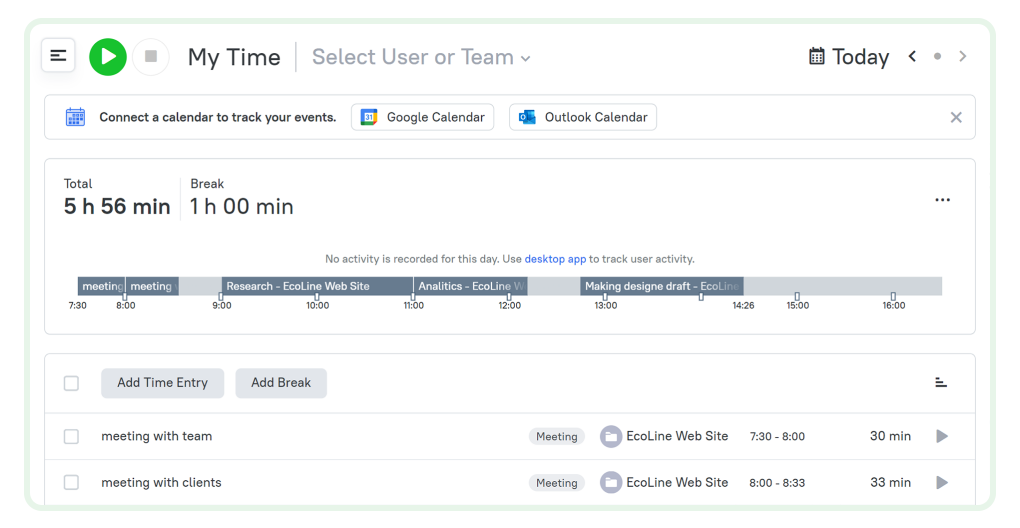
Integrations with Asana, Basecamp, GitHub, Pipedrive, Trello and Wrike are available.
Cons: tools for invoicing are not available, some users find the navigation confusing.
Pricing: trial version is available for 30 days. There is a completely free version with reporting for an unlimited user number. This version has no integrations, billing and employee activity tracking. These functions are available in the $5-tariff. Another version, which costs $7 per month, offers screenshots, salary calculations and integrations with Jira, GitLab and Redmine.
Rating at Capterra: 4.5 of 5.
TimeCamp
Platforms: Web, iOS, Android, Windows, Mac, Linux.
Features: a convenient tool to track how much time is spent for routine tasks. It enables an overview of the employees’ performance and invoicing the clients.
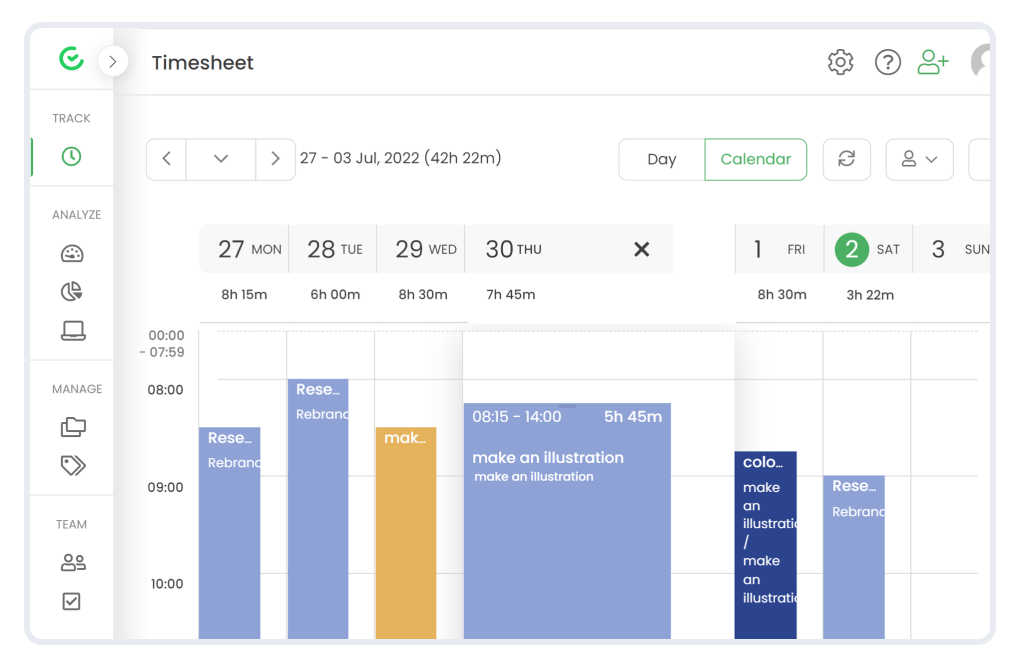
Cons: some users mention the function of time specification is worth improving, as well as reporting forms.
Pricing: free trial period is available, as well as a free version with unlimited user, project and task number. Paid versions cost between $7 and $10 per user/month. If you pay yearly, you can get 10% off the price. The version for $7 offers exportable reporting, time rounding, unlimited integrations and budgeting.
Rating at Capterra: 4.7 of 5.
Team communication tools
Very often teamwork requires much more than just commenting on tasks. For this purpose there are useful tools for team communication of different types.
Slack
Platforms: Web, iOS, Android, Windows, Mac
Features: the platform is based on channels where team members can exchange messages, files and make video calls. Closed chats are available, with access via invitation only.
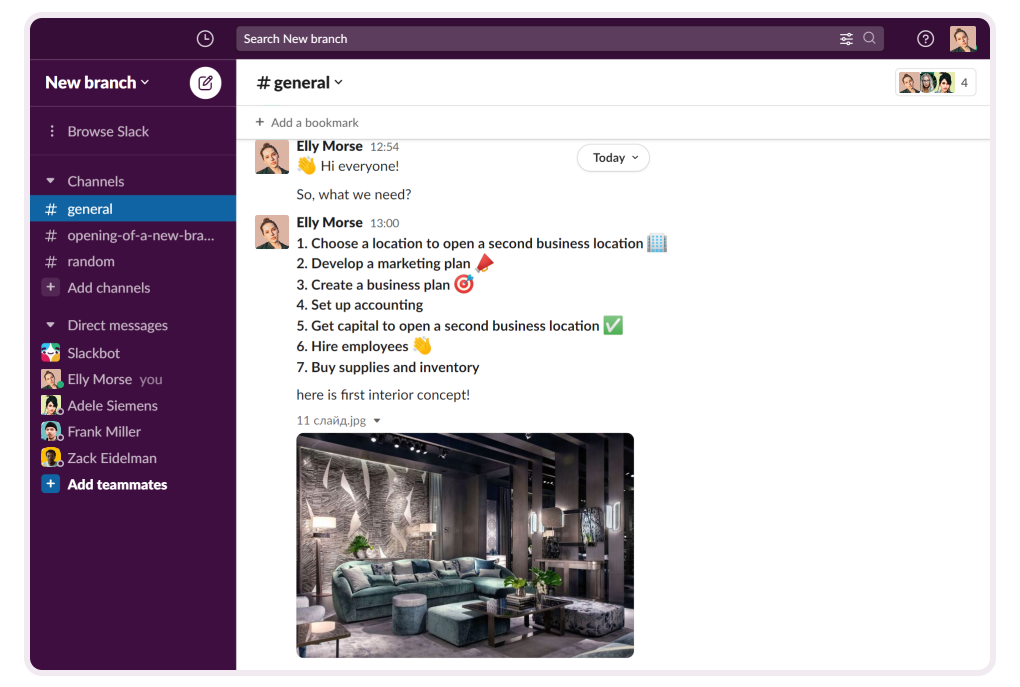
Cons: users have sometimes problems with calls and channel entry. Others complain about the price and long waiting hours for technical support.
Pricing: to test the product you can use a free trial period. There is also a free version with up to 10 000 messages of your team, private voice and video calls and up to 10 integrations.
Paid versions start at $8 per user/month ($6.67 when paid yearly). For this money you get additional functions: full message history, unlimited integrations, group calls for up to 15 users, guest accounts.
Rating at Capterra: 4.7 of 5.
Vectera
Platforms: Web, cloud, SaaS.
Features: a product that takes team and customer communication to a new level with private and group conferencing, screen sharing and a whiteboard for communication. It also offers document exchange, notes, synchronization with the calendar and CRM, cloud systems.
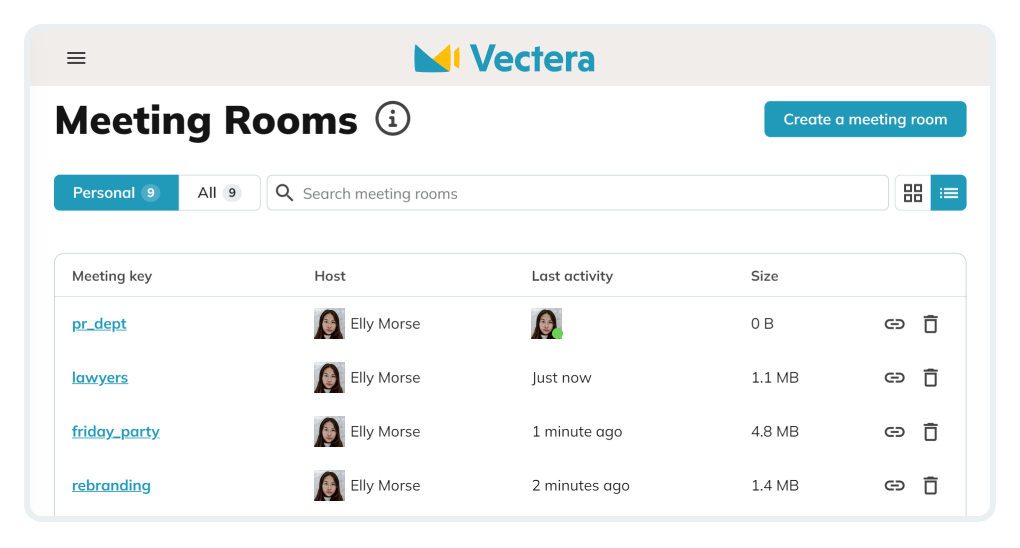
Cons: not all users are satisfied with the board size and number of integrations.
Pricing: before choosing a tariff plan, you can test the tool for 14 days. A free version is also available, it is good for face-to-face meetings, offering 4 meeting rooms and screen sharing. For $27 per month you get unlimited rooms, notes for private meetings, meeting room templates, group calls, cloud and local data storage.
Rating at Capterra: 4.8 of 5.
Lucidspark
Platforms: Web, iOS, Android, Windows, Mac.
Features: this digital canvas is well suited for group brainstorms, making customer roadmap and a 2x2 matrix (SWOT analysis). You can use stickers, timer and chat.
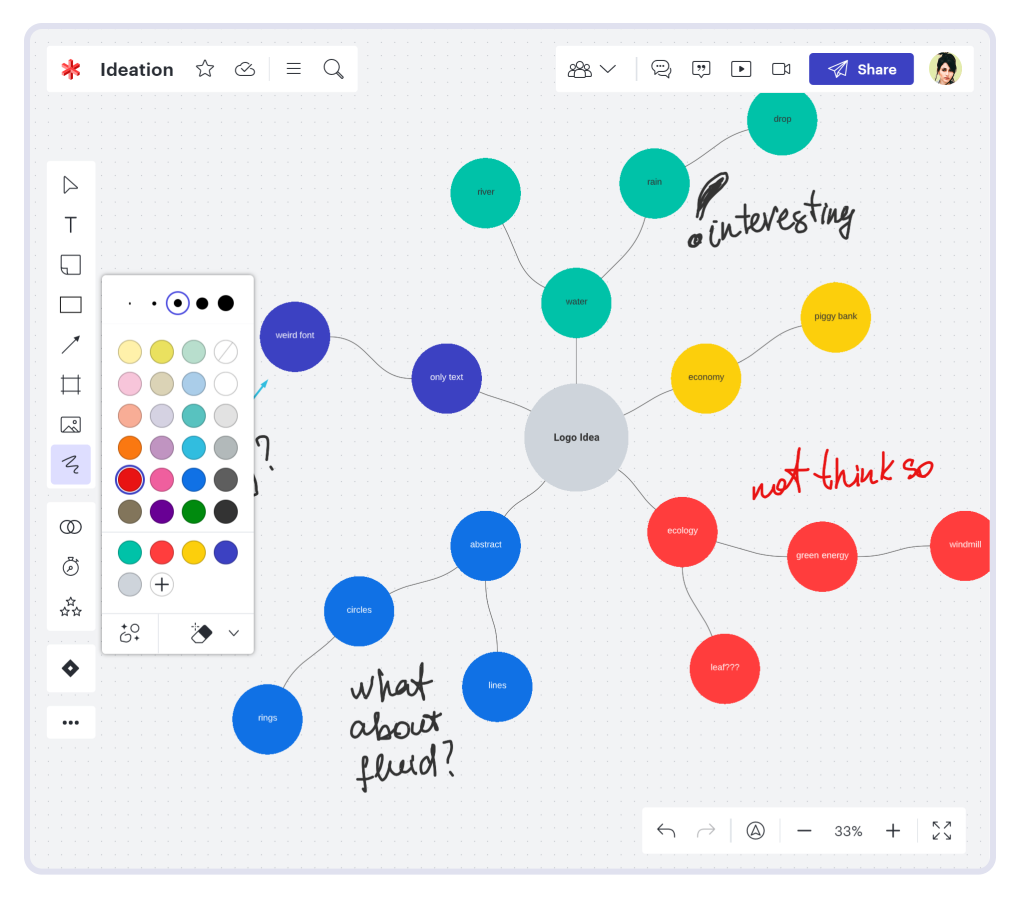
Cons: not all users find privacy setup easy, boards are also worth updating.
Pricing: trial version is available. There is a free version with 3 boards, integrations, drawing and emoji. For $7.95 per month you get unlimited boards, labels and automatic idea grouping.
Rating at Capterra: 4.7 of 5.
Chanty
Platforms: Web, iOS, Android, Windows, Mac.
Features: Multifunctional team chat. It has the ability to exchange text, audio and video messages, as well as screen sharing. It is convenient that you can turn messages into tasks and assign executives and deadlines.
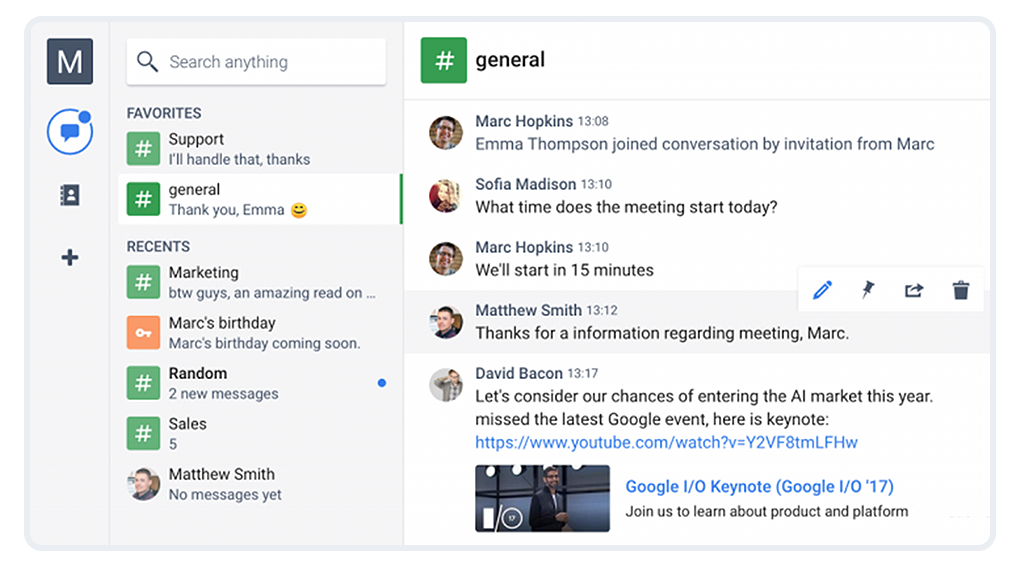
Integration with Dropbox, Trello, Jira are available.
Cons: users would like more emoji and extended setup.
Pricing: free version is available, which would be good for a team with up to 10 members. They would have 10 Gb data storage and a possibility to exchange voice messages. Using group video calls, integrations and creating tasks in a chat will cost you $4 per user/month (if paid yearly, the same will cost $3).
Rating at Capterra: 4.7 of 5.
File exchange products
Such services facilitate collaboration and ensure access to the necessary information for all users for whom this is important.
Hightail
Platforms: Web, iOS, Android, Windows, Mac.
Features: the optimal solution for those who need to work with really large files, for example, design files. Here you can assign tasks to team members and monitor their activity.
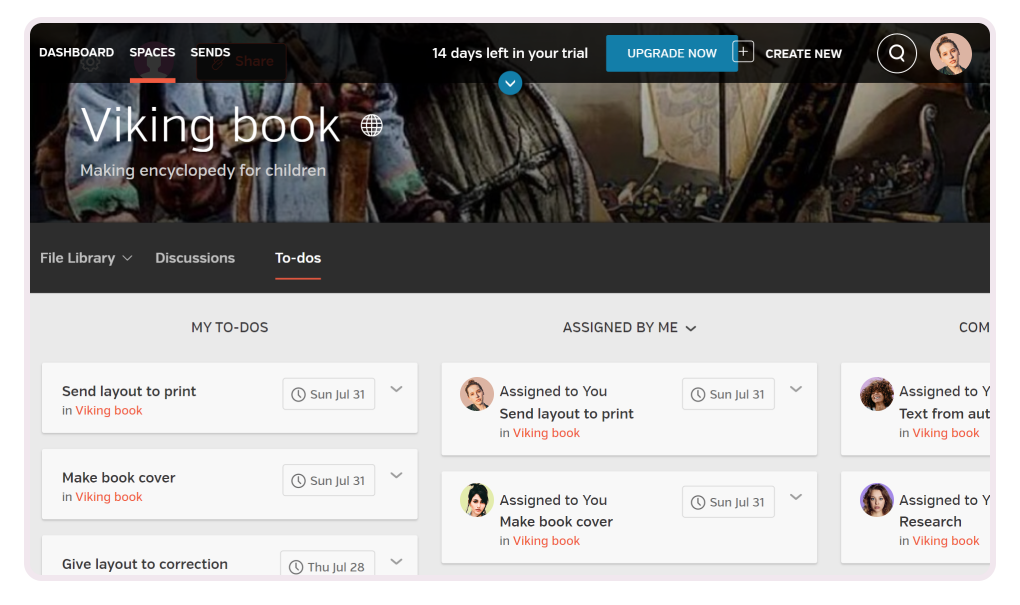
Cons: file synchronization between devices and cloud storage facilities is not always correct. Technical support is not prompt enough.
Pricing: a trial version and a free tariff plan are available. The functions are limited though: users can upload files up to 100 Mb and every user gets about 2 Gb data storage space. For $12 per month (in case of a yearly payment) the user can upload files up to 25 Gb and have unlimited storage possibilities.
Rating at Capterra: 4.4 of 5.
Zoho WorkDrive
Platforms: Web, iOS, Android, Windows, Mac.
Features: the tool is good for teams who want to upload their files on a disk and allow other team members to read, edit and comment on them.
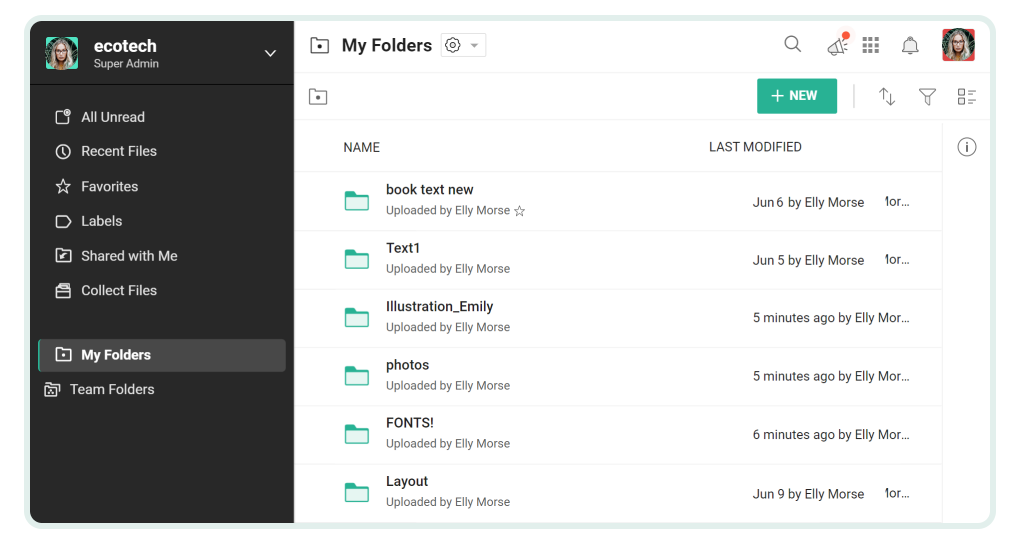
Cons: users note very long file uploading and poor technical support.
Pricing: a free trial version is available. Paid tariffs start at $2.5 per user/month when paid yearly. Monthly payments would cost you $3 for the cheapest tariff. It includes 1 Tb data storage for a team with up to 3 members, a possibility to upload files which do not exceed 1 Gb.
Rating at Capterra: 4.6 of 5.
Egnyte
Platforms: Web, iOS, Android, Windows, Mac.
Features: the tools allows not only file uploading and processing, but also access control with notifications about the unauthorized activity.
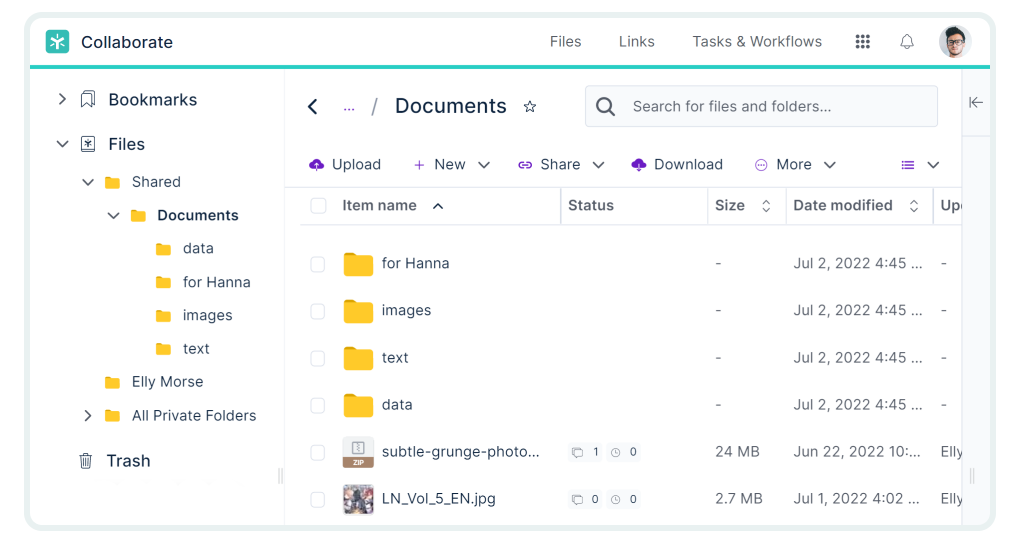
Cons: problems with file uploading and synchronization.
Pricing: free trial version is available. Paid tariffs start at $20 per user/month, when paid yearly. For the money you get data security, access control and malware protection. Max file size for uploading is 100 Gb.
Rating at Capterra: 4.5 of 5.
Google Drive
Platforms: Web, iOS, Android.
Features: the tool facilitates file uploading, synchronization and sharing and allows access control.
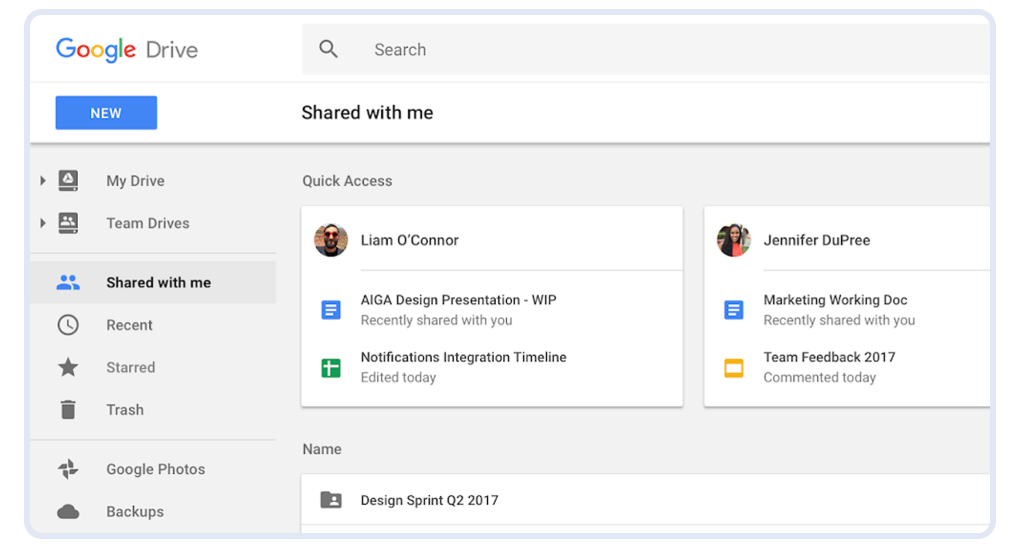
Cons: sync is not always correct, if the file is heavy, preview is unavailable. Performance is very much depending on the quality of internet connection.
Pricing: free 100 Gb data storage. For $6 per month you get 30 Gb data storage capacity and for $12 - 2 Tb.
Rating at Capterra: 4.8 of 5.
Services for developers
As a rule, a full cycle of software development requires special programs. They facilitate collaboration between developers and offer a possibility to improve specification management, test scripts and software development in general.
Redmine
Platforms: Web, iOS, Android, Windows, Mac, Linux.
Features: this open source platform allows to create projects and tasks, prioritize them and track progress. File and repository exchange, as well as error and bug correction are also available.
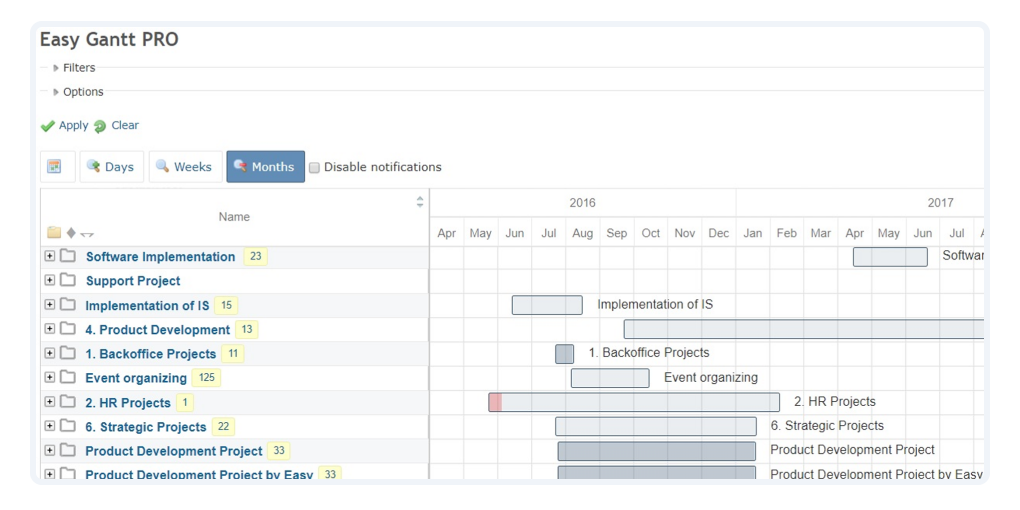
Cons: users complain about UX, search function and initial setup.
Pricing: free trial version is available, paid version costs $25 per month.
Rating at Capterra: 4.1 of 5.
Jira
Platforms: Web, iOS, Android, Windows, Mac, Linux.
Features: teams working with agile, choose this tool for collaboration. Kanban boards, sprint reporting, task progress charts give an overview of the project or task status, which is also useful for future project planning.
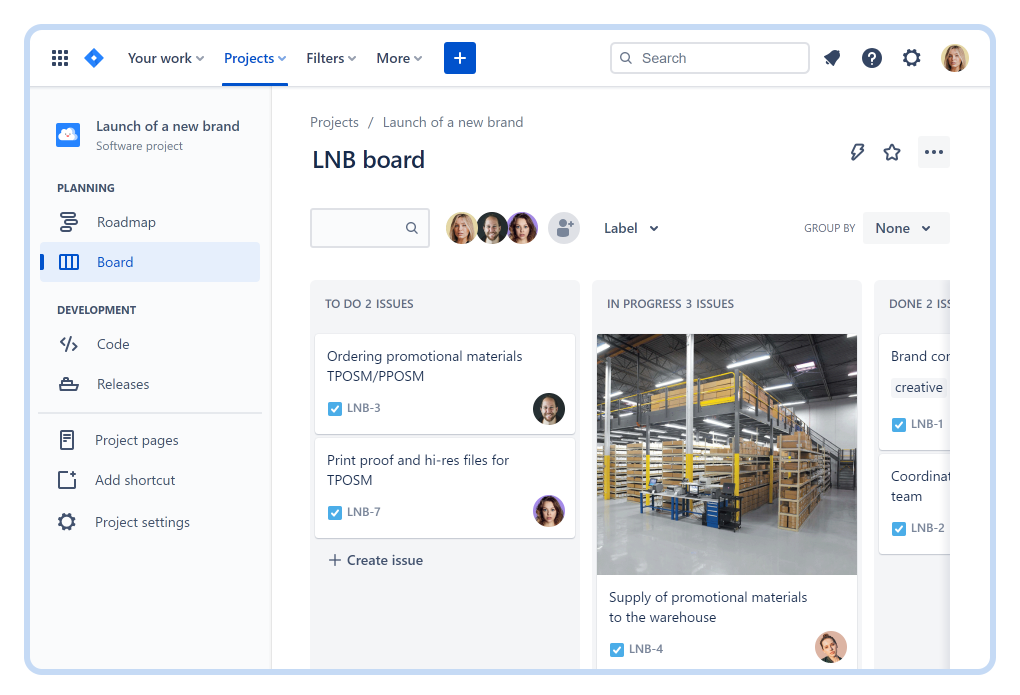
Cons: many users find it difficult to understand how the tool operates and have problems with task search.
Pricing: trial version is available, which is completely free for teams up to 10 members. For more users the product will cost $7 per month.
Rating at Capterra: 4.4 of 5.
Confluence
Platforms: Web, iOS, Android, Windows, Mac, Linux.
Features: this product is usually used as an information center for the whole company, as well as for separate teams. It fits well for storage of rules, instructions and other documents. The employees can edit data and editing details can be traced.
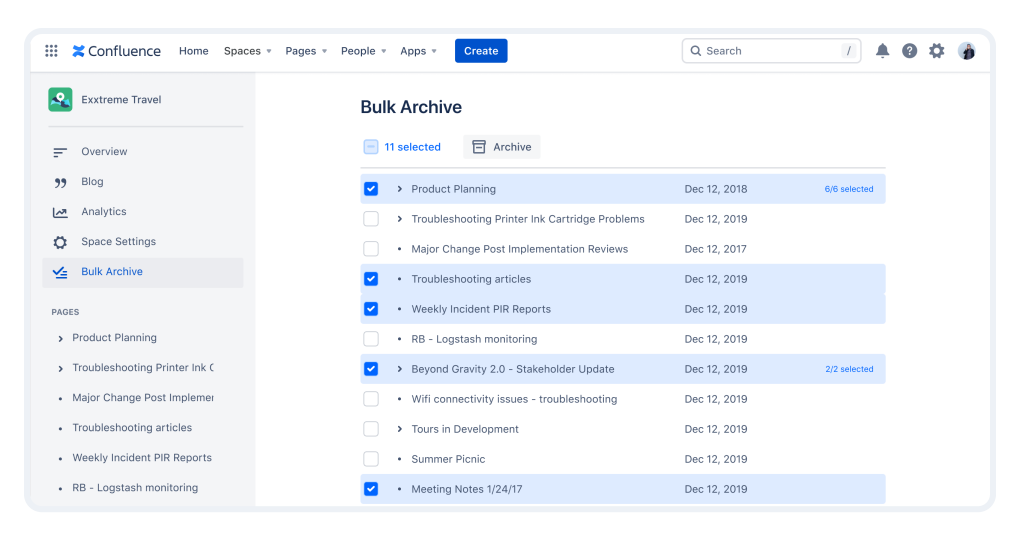
Cons: there are problems with document export and text search.
Pricing: a free version is available for up to 10 users with unlimited page number. For $55 per month up to 20 000 users get access to this product.
Rating at Capterra: 4.4 of 5.
Codegiant
Platforms: Web, Windows, Mac.
Features: Another tool for developers with a user-friendly interface. It offers project and task management, knowledge management and repository uploading.
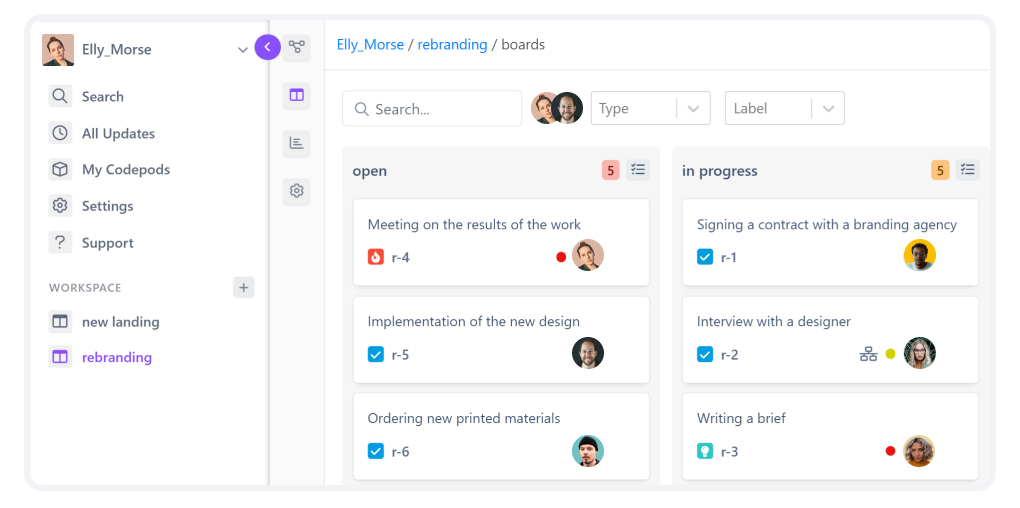
Cons: not all users feel ok about the lack of mobile app.
Pricing: free trial version is available. Teams with up to 5 members can use Codegiant for free, with storage capacities up to 5 Gb. For $9 per month you get unlimited user number and up to 50 Gb data storage.
Rating at Capterra: 4.4 of 5.
If you are ready to implement strategies for multiple project management and use special tools, you will find it not that difficult to run several projects at once.
